the ERIC ALBRONDA INTERVIEW
I’ve been a Blue Cheer fanatic ever since I first heard “Summertime Blues” on a small transistor radio in 1968. Who were these people, I wondered, and how did they make this chaotic, powerful sound? I finally saw a picture of them on the front cover of Eye magazine, and was floored. They were the wildest and coolest looking band I had ever seen. And was that a chick playing drums? I immediately went to my local record shop, procured a copy of their first album, “Vincebus Eruptum”, and literally ran home to listen to it. It not only blew my mind, but it also blew up my Dad’s speakers….and the volume was on ‘4’!
I followed the band’s ups and downs for decades afterwards, and was finally able to see them perform live, in 2006. They were still the heaviest thing I’d ever heard, before or since, with the possible exception of Jimi Hendrix.
With the advent of personal computers, I was able to have long lasting correspondences with many of the members of the band, includin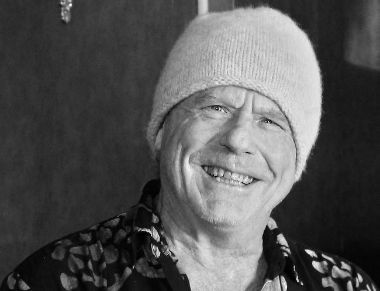 g the late, great Dickie Peterson, Leigh Stephens, Randy Holden, and producer Eric Albronda - the ‘ears’ (which was his nickname) of Blue Cheer. After almost 15 years of communication, this is my first interview with Eric. Enjoy! g the late, great Dickie Peterson, Leigh Stephens, Randy Holden, and producer Eric Albronda - the ‘ears’ (which was his nickname) of Blue Cheer. After almost 15 years of communication, this is my first interview with Eric. Enjoy!
R.S. Eric, you were at various times the drummer, manager and producer for Blue Cheer. Could you expand on your association with the band in those varied capacities for the Terrascope readers?
E.A. I started my music studies seriously in about the 4th grade and all through my early years and through the ninth grade I played all the percussion instruments in the school bands and orchestras. I recall my music instructor in the 4th grade informing me that he could no longer teach me anything. I went home very depressed and told my parents that the teacher thinks I’m totally stupid and unable to learn anything more on the drums. Well it turns out that was not what he meant but rather I had surpassed his level of understanding of the instrument. Without saying it, he was inferring I was a prodigy in music and that I could come and play whenever and whatever I thought was appropriate. I thought that was way cool to have that kind of freedom.
When we started Blue Cheer, I was the original drummer with Dickie Peterson on bass and Leigh Stephens on guitar. After several months of rehearsals, Dickie took me aside and told me that I could become the drummer he wanted but it would take a while to get there. He thought that I would be better suited in another function. In the back of his mind he knew that the possibility of getting Paul Whaley to play drums was a reality and that’s who he wanted. What I realize now is that since I was classically trained, it made Dickie’s job harder as I was not a slam bam type of drummer but rather conservative in my approach. At first I was a little put off by his comments but back then the idea of a band was as a ‘family’. The idea was that each member of the family did what they could to further the cause of the overall project. So, myself and my partner Jerry Russell essentially became the managers and added ‘Gut’ (Alan Terk) as part of our management team. It turns out I could talk to anybody and was not intimidated by the ‘suits’. That function was invaluable —the musicians really had a hard time representing themselves other than strictly playing the music. From there I went on to being the road manager on Blue Cheer’s first and only American tour and finally as producer, as Abe (‘Voco’) Kesh singled me out to take his chair. Again, we all filled functions that were needed and we really chose what we wanted to do to push the whole thing along towards success.
R.S. There was a type of LSD called Blue Cheer. Was the name of the band named after the acid, or the other way around?
A.E. Gut and chemist, Stanley Owsley were ‘working in the lab late one night’ when Owsley turned to Gut and said I need a name for this product. Gut said yeah, I need a name for a band. Owsley said how about ‘Blue Cheer’. So the truth is they were named at the same time, but Owsley came up with the name.
R.S. The first album was called, 'Vincebus Eruptum'. It has no literal Latin - English translation. What does it mean and who thought of that title?
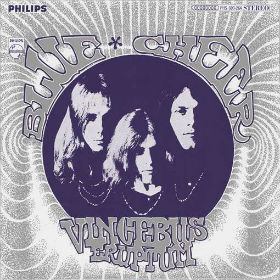 A.E. My friend, Charlie Osborne, came up with the title which he admits is nonsense but it’s as close as he could come to “control of chaos!" A.E. My friend, Charlie Osborne, came up with the title which he admits is nonsense but it’s as close as he could come to “control of chaos!"
R.S. Blue Cheer was considered to be the loudest band on the planet in the late '60's. Was this a conscious decision on the band's part? Please describe how the switch from multiple Fender amps to the six (!) Marshall stacks helped to achieve that incredible depth and volume of sound.
A.E. Blue Cheer did have the reputation of being the loudest band around and I suppose that was true for a short while. That was not our intention. It was a function of the times when the PA systems were less than adequate except for a few halls. The Fillmore auditorium was the exception as Bill Graham made sure he had an adequate PA to cover just about any situation. Before we purchased the six stacks of Marshall amps we were using four Fender Dual Showman amps apiece and stacked them to resemble Stonehenge! For me the Fenders were much crisper than the Marshalls and also louder, and frankly I preferred them but Marshalls were fast becoming the amps to have because they were British and both Eric Clapton and Jimi Hendrix used them, which made them superior in the eyes of American musicians. Leigh and Dickie wanted the look of the Marshalls so that was that. They fit our image and kept us at the forefront of being cool with respect to fans, fellow American musicians and later British musicians as well.
R.S. The first Blue Cheer lp, 'Vincebus Eruptum' contained the hit, "Summertime Blues" and was obviously a huge success. That being said, I always thought Blue Cheer's second album, "Outsideinside", was a strong follow-up to the first, and maybe stronger in terms of song writing, performance and production. Still, it didn't sell as well, even though monster cuts like "Just a Little Bit" and "Feathers From Your Tree" were released as singles. Was it a lack of promotion and/or distribution from the Philips/Mercury label? Or something else?
A.E. When a band has a hit record as we did with Summertime Blues, all of a sudden you are being pulled from all sides as the record company, Mercury/ Philips wanted more product. Essentially, the first album was just recording their present set which had a lot of miles on the road to perfect the sound as we wanted. Really we just set up in the studio and played our set which was proven to be effective. Recording that first album was easy and did not have the pressure of the second album. It’s difficult to follow up on a hit single. Dickie and Leigh were not song writers and Dickie relied on Peter Wagner, (one of our family) who’s job was the taking care of the equipment, but he also had a master’s degree in creative writing from UC Davis. So, Peter, (writing the lyrics) and Dickie, (the music) became a great team writing songs. But the edge of the first album still wasn’t there. It was fun to do as we recorded on a beach in Marin county, on a pier in New York, as well as at The Record Plant. I learned a great deal working on the second album as we had Eddie Kramer as our sound engineer, who at the time was up there as one of the best of the best, having just worked with Hendrix. He also invented many of the techniques of the day that later were replicated digitally and are now in a box of some sort.
Basically the magic was missing on the second album and also when it came out we had just finished a nine-month tour, so we were all burnt out. Also and most importantly at the time, Dickie and Paul decided that they no longer wanted Leigh Stephens in the band. This was partly because of his playing style but more so because he did not agree with their personal habits. They were under constant chastisement by Leigh and it just got to the point of an intolerable situation. When a band starts to replace personnel unless they are super- established and very lucky, the magic goes out of the performance and thus spells the end in most cases. Another reason that the second album was not such a good seller was that we did not back up the record with another national tour but instead we booked a tour of Europe with a new lead guitar player, (Randy Holden). I knew then, it was essentially over for Blue Cheer and so I left, along with Leigh, to England.
R.S. Right, you went to England (with Leigh Stephens) in the late '60's, and produced his excellent "Red Weather" album. How did that come about?
E.A. As Blue Cheer made way over a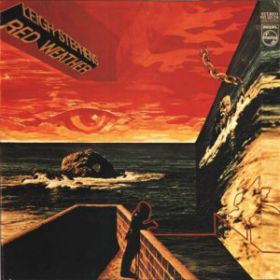 million dollars for the Mercury/ Philips record company, it was very easy for me to get Leigh a contract to make a solo record album. Usually, nowhere in the contract does it say where you must do the recording so with the modest advance we used the money to send Leigh to England to find a place to live first. I joined him a few months later and went into the London office of Mercury records and announced that we were there to make an album and showed them the contract. They had heard nothing about our intentions so it was a big shock to them. We also went through a wrench with their producers by informing them we were going to produce the album ourselves. I insisted on this. Fortunately, my old partner, Jerry Russell’s brother, Ethan, was a well known rock photographer in England at the time. He introduced me to the folks in the Rolling Stones office, who in turn, introduced me to Ian Stewart, the piano player who was responsible for the formation of the Stones. Ian also was in charge of their rehearsal studios. Ian and I got on quite well and he liked us, which was lucky because Ian could be very crusty to someone he did not care for. We rented their studio space to rehearse, and along with a very gifted drummer, Kevin Westlake, Leigh worked on the album. Ian also loaned us the necessary equipment to record with as well as expressed an interest in his playing on the album which he did and gave us credibility that was first class! We had also become good friends with Micky Waller, drummer for Rod Stewart at the time, and also respected as one of the best drummers in London. He came to our sessions at Trident Studios and brought along Nicky Hopkins. So we had quite a line up of name musicians to help us record Leigh’s album. It was a steep learning curve for me as it really was my first solo production work and I was blessed to be able to work with such great talent. Not to mention that Ian let us use the pre-synth, Mellotron. One of the problems with doing a record with so many name musicians is there is little chance that they will agree to be part of a touring band to promote the record and this is exactly what happened in our case. At one point after recording Red Weather we were rehearsing in the Stones studio, we had Leigh on guitar, Ron Wood on guitar, Micky Waller on drums and Pete Sears on bass. This was to be the touring band! Of course, it didn’t come to pass for various reasons. million dollars for the Mercury/ Philips record company, it was very easy for me to get Leigh a contract to make a solo record album. Usually, nowhere in the contract does it say where you must do the recording so with the modest advance we used the money to send Leigh to England to find a place to live first. I joined him a few months later and went into the London office of Mercury records and announced that we were there to make an album and showed them the contract. They had heard nothing about our intentions so it was a big shock to them. We also went through a wrench with their producers by informing them we were going to produce the album ourselves. I insisted on this. Fortunately, my old partner, Jerry Russell’s brother, Ethan, was a well known rock photographer in England at the time. He introduced me to the folks in the Rolling Stones office, who in turn, introduced me to Ian Stewart, the piano player who was responsible for the formation of the Stones. Ian also was in charge of their rehearsal studios. Ian and I got on quite well and he liked us, which was lucky because Ian could be very crusty to someone he did not care for. We rented their studio space to rehearse, and along with a very gifted drummer, Kevin Westlake, Leigh worked on the album. Ian also loaned us the necessary equipment to record with as well as expressed an interest in his playing on the album which he did and gave us credibility that was first class! We had also become good friends with Micky Waller, drummer for Rod Stewart at the time, and also respected as one of the best drummers in London. He came to our sessions at Trident Studios and brought along Nicky Hopkins. So we had quite a line up of name musicians to help us record Leigh’s album. It was a steep learning curve for me as it really was my first solo production work and I was blessed to be able to work with such great talent. Not to mention that Ian let us use the pre-synth, Mellotron. One of the problems with doing a record with so many name musicians is there is little chance that they will agree to be part of a touring band to promote the record and this is exactly what happened in our case. At one point after recording Red Weather we were rehearsing in the Stones studio, we had Leigh on guitar, Ron Wood on guitar, Micky Waller on drums and Pete Sears on bass. This was to be the touring band! Of course, it didn’t come to pass for various reasons.
I returned to New York to have the Red Weather album pressed, and shortly after returned to Los Angeles. With what was left of Blue Cheer, and after consulting with my partner Jerry Russell, it was apparent that again the devil had moved in. The band was running through what little money we had very quickly on all the wrong things. I became disgusted with the entire business that we had set up and offered the management of Leigh’s band to my friend, Charlie Osborne who lived in an apartment above the Venice pier merry- go- round (an appropriately crazy place). I returned to the San Francisco area and eventually worked on the 4th, 5th and 6th Blue Cheer albums.
R.S. So, you produced or co-produced the last three Blue Cheer albums on the Philips label…the self titled "Blue Cheer", "The Original Human Being", and "Oh, Pleasant Hope". Considering the incontinent flow of leadership, from Dickie Peterson, to Bruce Stephens, and finally Gary Yoder, it's amazing that anything was 'produce-able', at all. But, "Oh, Pleasant Hope" stands as a masterpiece of one of the earliest and best country-rock-roots albums of all time. Eric, how did you get that beautiful clean recording with all this madness around you?
E.A. Well, you are correct in that the madness was all over the place. Dickie was hocking his bass every other day. He was incapable of writing songs and instead relied on publishing companies to suggest songs. Gary Yoder and Gary Grelecki did write some good songs along with Dick Peddicord, and so we stumbled through those last three albums. Basically as the musicians were getting union session money, that became their purpose and they milked it for all it was worth, getting a pretty big check for every three-hour session. Believe me, it was very strange dealing with all those dysfunctional musicians. It was surely a madhouse and frankly I just do not know how we managed to get the job done. I guess it was a result of the musicians at that time were good enough to fake it and cover each other just enough for the recordings to make some kind of sense, but definitely a far cry from Blue Cheer’s original magic and greatness.
You asked about 'Oh Pleasant Hope' and I’m glad that you liked the results. I remember the day I mixed the album. I was in the Mercury recording studios in San Francisco alone with George Horn, the chief engineer at the time. I decided to do an experiment and instead of spending ma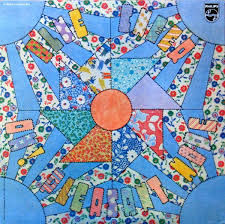 ny hours getting the perfect sound for each track, I just decided to try something I had never done before. I just asked George to set up the board and I sat in the main chair. I said, “I’m going to mix this album in a big hurry but you will love the results”. So I just did it that way. I had all the confidence in my musical taste and I knew what I liked. We just moved the knobs at will and just set them where the best sound was. And we did that all the way through the album. Instead of taking days to mix the album, I did it in about two hours, just trusting my abilities and aesthetics. Why not? I had years of experience by this time was given the go ahead by the chief engineer and the musicians were nowhere in sight - just me and my musical taste. Ideal for mixing an album. ny hours getting the perfect sound for each track, I just decided to try something I had never done before. I just asked George to set up the board and I sat in the main chair. I said, “I’m going to mix this album in a big hurry but you will love the results”. So I just did it that way. I had all the confidence in my musical taste and I knew what I liked. We just moved the knobs at will and just set them where the best sound was. And we did that all the way through the album. Instead of taking days to mix the album, I did it in about two hours, just trusting my abilities and aesthetics. Why not? I had years of experience by this time was given the go ahead by the chief engineer and the musicians were nowhere in sight - just me and my musical taste. Ideal for mixing an album.
R.S. Eric, in 2012, you released "Blue Cheer 7" on ShroomAngel Records. I understand that the material was recorded at Jim Keylor's studio in 1978, years after the original band broke up. Could you tell the Terrascopic viewers about that?
A.E. Yes, Jim Keylor (who played on “Oh, Pleasant Hope”), built a home studio in his house on Army Street in San Francisco. Jim had played in a band called The Oxford Circle, (with future Blue Cheer alumni, Paul Whaley and Gary Yoder), a name that appears on a lot of early Fillmore auditorium posters as well as the Avalon ballroom posters. Both he, and one pretty healthy incarnation of Blue Cheer consisting of Dickie on bass, Tony Rainier on guitar and Michael fleck on drums, managed to scrape together enough money for a tour. Although it was difficult, as the audience that appreciated Blue Cheer was shrinking as they years went by. None the less, after a band has been on tour it was a perfect time to record.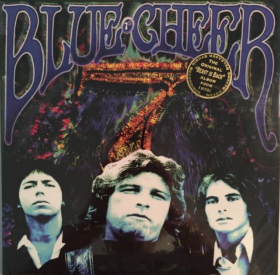
‘Blue cheer 7’ was such an album. Basically, Blue Cheer just set up and played their set and the results were very positive. I had not heard the songs for many years and when Jim got me a copy of the album I must say I shed a tear, not from missing our past, but from just how great the music sounded. They were healthy had incentive and were proud of being able to play in a band that at one time had tremendous success and so be it. It is the closest thing to the original recordings of anything Blue Cheer has done. I personally think the version of ‘Summertime Blues’ on “Blue Cheer 7” is better than the original, which is saying something.
R.S. Thanks for the interview, Eric. Is there anything else you’d like to tell our readers?
A.E. Rick, I appreciate the chance to do this interview. I find now, (at 70 years old), the important thing for me is to get the information out there in an honest and forthright manner. As time goes by and with a few of us who are no longer on the planet, it appears it is down to me to be the one to tell the story. Blue Cheer has been an amazing ride for me and will be with me forever. Again, thank you for the opportunity to continue to tell the story.
|

